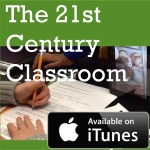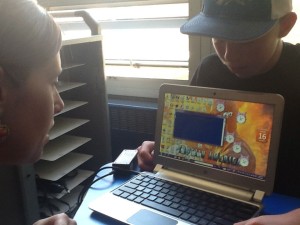What would you do if you were given the time and space to create a school where students could tell you exactly what and how they wanted to learn?
Where they arrived cheerful and excited with boundless energy for the school day…
And what if I told you it was grounded in the most powerful forms of pedagogy: personalization, proficiency based education and flexible pathways?
In 2008, myself and a few other educators at Essex Middle School decided to build a new kind of school.
Over a 10-year period, students in the Edge Academy at Essex Middle School built a working maple sugaring operation, put solar panels on the roof of their school, released mixtapes, built an industrial composter, and created a community garden for the town.
And I’m going to tell you how they did it.
You’ll hear from former Edge students, families and other Vermont educators who experienced firsthand the transformative power of providing students with the support to choose their own pathways in learning — and what the difference is when students tackle the rest of their education, and beyond.
“You go into this multi aged team thinking, oh man, the eighth graders, they might be mean, they might just not talk to us, and then they were just so inviting and it was such a nice environment to be in. It was just like I miss it. It was really, felt like a home.”
First and foremost, we focused on building radically supportive relationships with and between students.
We wanted students to empower themselves. We wanted students to feel like they really could change the world, by making their own coursework and projects. And we wanted all of those things to have strong ties to the community.
This is the collective story of The Edge Academy told by some of my former students and their families: Chloe Lemmel-Hay, Barb Lemmel, Mitch Hay, Rebecca Stone, her son Aaron, Wren House and Lily Davis.
And I don’t think this story could be told any other way. Because effective personalized learning isn’t one student sitting alone at a computer. It’s truly a collective experience, with everyone supporting one another: peer-to-peer, youth-to-adult, students-and-community.
Everyone showed up to make The Edge work, so everyone shows up here in its story.
First, let’s talk about relationships. The Edge was *all about* relationships.
Meet Chloe Lemmel-Hay, and her parents, Barb and Mitch.
Chloe: My name is Chloe Lemmel-Hay and I was in The Edge from sixth grade to eighth grade and that was from 2009 to 2012, and I’m currently in my sophomore year at Harvard University.
Barb: I’m Barb Lemmel. I’m Chloe Lemmel-Hay’s mom and I was associated with The Edge during that time as well.
Mitchell: I’m Mitchell Hay. Chloe Lemmel-Hay’s dad.
The Lemmel-Hays were there from Day One. They were there on the first day of The Edge. They remained advocates not just for their own daughter, but for all the students, and for the very idea of The Edge. And we still keep in touch.
“I really appreciated the relationships with the teachers that I had at The Edge,” says Chloe, “because I was really, really close with you. And I was really close with a lot of the teaching aids and the staff. But I always felt so comfortable just coming into the staff room! And you never made me feel like I didn’t deserve to spend time with you outside of when we were in class, and ask you questions about things that we weren’t covering in class, and have lunch with you and just do all kinds of things and that was really, really valuable. The Edge gave kids who weren’t of a specific type of place to really flourish and feel valued and make relationships with other people, and that was really special.”
That’s an important piece.
There’s a lot of generalizations about Vermont as a homogeneous population of people, but as an educator, it’s apparent everyday how diverse our population of students is.
And it was imperative that The Edge was an equitable place. A place where everyone felt valued and welcomed. Even loved. It was about everyone being comfortable enough to try new things and speak up.
Barb felt it too: “I loved feeling like Chloe was going to an educational program that I really believed in. I completely trusted the teacher team and I completely trusted the philosophy. I really believed in what you were trying to do; it totally made sense to me. I enjoyed the meetings with other parents, when we talk about kind of what our hopes and dreams were.”
She goes on to say, “The kids were a community; that’s the other thing I remember. It was how much connection there was between the students. They’re middle schoolers, right? So, sometimes it was more dramatic than others, but people really cared about each other and The Edge worked hard to nurture that.”
It’s really interesting, because in these interviews, everyone kept talking about “home” ,and “family” and “community”, and those just aren’t words you hear very often about middle school.
It was just great. You go into this multi aged team thinking, oh man, the eighth graders, they might be mean, they might just not talk to us, and then they were just so inviting and it was such a nice environment to be in. It was just like I miss it. It was really, felt like a home.
This is Raquel.
“My name’s Raquel. I go to Essex Middle School, and I was on Edge the school year of 2016-2017, during my 7th grade year. It just opened me up to a whole new world of people and it was great. It’s like: what? This is like, a thing? I didn’t know! It was amazing.”
So, Raquel came to me when she was in 7th grade, and just like she said, it was effective but she wasn’t really engaged. But she had a fire within her, for sure. Outside of school, she was an activist. She was involved in all these kinds of change movements. But inside, I don’t think anybody knew that. She was just… compliant. Or bored. She spoke up a lot, but… it was just to point out what wasn’t working for her.
During her 7th grade year, students chose issues they wanted to dive deep into, and we worked with a community artist to produce some slam poetry.
And all of a sudden, you heard Raquel’s voice.
That fire on the inside? Became an inferno when she released it. She knew who she was, and she wanted you to know now, too. Raquel was going to change the world. She had the opportunity to share her poetry at a statewide conference, as one of the keynote speakers.
Raquel had a strong voice and a strong point-of-view before the Edge, but her relationships at the Edge, her strong relationships with both the adults and students there, helped her channel that voice into one that could change others. It became a voice of change. Instead of seeing her as disruptive, we saw that fire inside her as something to be valued, and something we wanted her to feel empowered to share.
Raquel is Latina, and she fell into the same trap so many students of color experience in our schools: she was seen as disruptive because she shared her voice and her opinions. But on The Edge, we wanted her to embrace her voice. We wanted her to stand with her community in feeling supported and valued for using it.
Now, Rebecca Stone’s son Aaron was in The Edge for six years. Aaron came to us as a 3rd grader, with a set of unique abilities and talents. Erin needed freedom and support to become someone who could use that freedom effectively.
“What I miss most about it,” Rebecca says, “I guess I would say is just the kind of nurturing, and care and love that you guys showed. Yes, it was very much a family and a community, and the gatherings and the meals and the big project presentations, and all of those are things that you’re not necessarily going to get in a typical classroom environment. I think in terms of watching Aaron and knowing probably what he enjoyed most was that the year he actually got to spend building the maple sugar house, and doing the maple sugaring project was something completely different from anything he’d ever done. It introduced him to tools and you the science behind sugaring, and he really had a ball with that. It was great. Ever since then he’s more than happy to pick up a tool and help his dad on projects too.”
Yes, they built a sugar house.
Edge students designed and built their own working maple sugar house, on school grounds. And that was only the beginning.
We used project-based learning in the most student-centered way.
Students took hands-on charge of their learning.
Students began by developing questions and concerns they had about themselves and the world. They compared notes with their peers and looked for common themes. They then turned those themes into a yearlong project.
Our requirement? Each project had to benefit the community in some way.
Wren House is currently a senior at Essex High School, and was on the Edge 2009, 2011, 2012 and 2013. “Building the sugar house was a lot of fun which is probably why I do theater now because I had that skillset. I just rejuvenated those skills and applied them to theater. I remember one year I did this map thing, this giant map of like a sustainable city. Really enjoyed doing that and realizing that if I wanted it to I could present this to a board or a state representative and be like, here is the thing that we could do. I remember Chloe put up the solar panels at the school and got grants and stuff like that. Just seeing kids my age going out and getting things done was really satisfying, really cool.”
So, it wasn’t just a sugar house.
We measured and reduced car emissions in the turnaround out front, and put solar panels on the roof of the school. We created a community garden for the town of Essex, and fruits and veggies from that garden were eaten in the school cafeteria. And we wrote stories and plays, and wrote music — all of it focused on the collective good.
For instance, every morning, there was this journalism elective. We started before the school day even began. And we learned the skills for being a journalist, and then the students looked for issues in their own community they wanted to investigate. I remember after Hurricane Irene, we traveled around the state interviewing Vermonters who’d experienced extreme flooding.
I had a student who was interested in why so much waste was being thrown away behind the local supermarket. She did a whole investigative report on food waste, rescued apples from the supermarket, and made us a pie with them.
The investigative reporting our students were doing, it became well known, and our local newspaper, The Essex Reporter, wound up running a column of these student-authored investigative pieces. It became a big deal in our town.
Remember Chloe?
“What mostly comes to mind,” she says, “is being in journalism at 7:00 AM before everyone else got to school and putting together our paper. And I had my first byline with my ‘Who wants hamburgers?’ article about e-coli. I was so excited that I got published in the Essex Reporter! And that would have only happened at The Edge.”
Mitchell: I enjoyed seeing how often Chloe would be going around with a spark in her eyes and light bulbs going off over her head, and so many projects having real world involvement and then real world repercussions. Like getting the solar array put on the roof of the school. You needed to write real letters to real people who’ve been making real things happen. Not including having Bernie Sanders come and do the Shindig with you all. That was–
Chloe: People are very impressed that I’ve had lunch with Bernie Sanders for that.
Barb: Do you remember when you did a week long lesson at the elementary school–?
Chloe: Oh my God, I totally forgot about that.
Barb: It was first graders and you had to come up with the lesson plan, blah, blah, blah. I remember you came back after the first day. You said, ‘Nothing happened the way I planned.’ I was like, well, you were teaching and they’re first graders! But you regrouped and you figured out, okay, these kids don’t get–
Mitchell: How to translate.
Barb: -anything I’m talking about, so how do I back up? That was an amazing experience for you.
Chloe: Yeah, and I remember, because I was teaching environmental science curriculum to first graders — second graders. I went in the first day and I like, had my PowerPoint, I had my plan, I was in front of the Smartboard. I had like, my teacher outfit on. And I was so ready. And I was 12, but that’s fine. But I was trying to explain climate change to them, and I was trying to explain greenhouse gases, to these six year olds and they didn’t know what a greenhouse was. I kept trying to make it more and more and more basic, then I realized they didn’t know what a greenhouse was. So I was like, well this is clearly not going to work out. Then I came back.
Barb continues: “My favorite group were, I called them The Dog Park Boys. I remember when they first said they wanted to start a dog park in Essex I was kind of like, we’re surrounded by trees, right? You want to do it, okay, whatever. They were like, because it’ll be really cool, and they were just sort of spacey about it, and I didn’t think that much about it. Then when I went back at the end of the year, they had put together. There was going to be a dog park in Essex junction and they had put it all together and the way they presented was so much more mature, so much more than just six months or nine months’ time. I saw that happen again and again and again and again.”
“The Edge also taught me how to advocate for myself,” Chloe says, “in a way that a traditional middle school setting would not have done, especially against, not against, but advocate for myself to people of power in whatever institution I was in, and it gave me a strong sense of, well, if I just keep pushing, either it’ll happen or I’ll really figure out why it’s not going to happen. I think it gives me pretty strong convictions about the values that I want to live towards throughout my life, regardless of whether I’m in school or in a career.
Finally, what was most powerful about Edge projects was the relationships they created with community partners.
Learning how to reach out through email, or even – *gasp!* – Make a Phone Call, were skills that were essential to their project work. And the response we received from the community was overwhelming! Edge students connected with farmers, artists, business owners, non-profits, town officials… The list became endless.
Raquel’s community connection, for instance, was with University of Vermont Extension and 4-H. She contacted them about exploring food systems and hunger. They put her in touch with a program that helps students learn to facilitate trainings for younger students on food systems. And, well–
“Well, I was in a program called TRY,” Raquel recalls. “It stands for Teens Reaching Youth. It was all about teaching little kids, like fourth graders. I chose to teach them about the food systems. The main concept was how the food in their lunch box got there. How we can help make that food help the environment. And we had to schedule our own appointments and choose our own classrooms where we wanted to teach. We emailed back and forth with Miss Dorthman, who teaches over at Founders [Elementary School]. We settled on a meeting time, we met with her. Then she asked us questions about the program and what we were doing, and if we needed anything from her. We explained it all to her.
Our first lesson was about… all about how the food in the lunch box got there.
It was *really* fun.
I like the TRY program because the little kids really seem to enjoy it. There was this one time where we were over-lapping into their recess time. And we felt really bad because we don’t want to overlap into their recess time, but they were really happy about it. They were like, really excited.”
One of the other keynoters, Abby, spent her time at the Edge developing a program where she up-cycled bags from a local coffee company. Working with a local designer, Abby came up with a brand new pattern for the bags, sewed them herself, then sold them to raise money for COTS, the Committee on Temporary Shelter. They’re a Burlington-based non-profit organization serving housing-insecure Vermonters.
“The base of the bag was a burlap sack,” Abby recalls, “and it was from Green Mountain Coffee they actually donated all of the bags for free and, then, the straps were like a green oilcloth and I used oilcloth because it’s super sturdy. At our annual Project Fair at the end of the year where everybody shares their projects and the parents come, and we had a booth and all the bags sold out and we made, I think about like 50 dollars, 60 dollars.”
“I think it was good because I was new to the community,” she continues, “and so I got to go to a bunch of places and meet a lot of new people who were willing to help. I was seeing that people in your community are going to support you and help you because I met a lot of professional people and they helped me with my project and influenced this.
So there you have it. That was The Edge.
We took three seemingly obvious methods — radically loving relationships with students, empowering students to take charge of their learning, and deeply involving the community in student learning — and meshed them together in a program that cultivated successful personalized learning in Vermont. These approaches were indistinguishable in action, because we saw and lived them every day at The Edge. They were, and I think still are, the heart of the work.
Students have *really* important questions about themselves and the world around them. We’re humans. And this power dynamic of teacher and student needs to shift. Truly valuing what each person’s struggling with in their questions is fundamental not just to effective personalized learning, but to being in this world together.
“My fondest memories,” says former student Lily Davis, “were probably some of the times lunch in the classroom or homework club after school, or the group projects. I feel like I really connected with some of the people and kind of wish I had that here still. If I hadn’t had that at that time I don’t know if I would have been at the place I am now. I like the close community that was built for the couple of years I was there.”
Personalized learning is really hard to get right. But when I listen to these students and their families talk about their time at The Edge… I think we did it. I think we got it absolutely right.
It’s hard for me to objectively sum up a full decade of this wild and beautiful teaching experience, so I asked our contributors to give me one word they feel sums up The Edge.
- Wren House: Family.
- Lily Davis: Probably… ‘outdoors’, because we spent so much time outside? Yeah.
- Raquel: It was… ‘enlightening’, is the word I would use. It just opened me up to a whole new world of people, and it was just… great.
- Chloe Lemmel-Hay: ‘Community’?
- Barb Lemmel: ‘Grounded.’
- Mitch Hay: This may be too close to ‘community’, but ‘relationships’.
- Rebecca Stone: I guess my word would be ‘awesome’.
It was a gift, for me as a teacher, to have these relationships that transcend time.
I wasn’t just their 7th grade teacher. Making this has reminded me just how powerful this experience was for all of us. We were all in it together. And all these students and their families? They’ll always be a part of my journey.
This has been an episode of The 21st Century Classroom, podcast of the Tarrant Institute for Innovative Education at the University of Vermont. A huge thank you to the host and producer of this episode, Lindsey Halman, along with Chloe Lemmel-Hay, Barb Lemmel, Mitch Hay, Abby and Raquel, Rebecca Stone and her son Aaron, Wren House and Lily Davis.
If you’re reading this transcript, it’s important to note two things:
- We opened and closed the audio version of this episode with music from a live performance by Yasmine Nsame & Violet Corcoran, who longtime listeners of the podcast may recognize from this very early episode. We are truly thankful for their courage and kindness.
- And two, each morning we’d start our day at the Edge listening to Lady Gaga’s “Edge of Glory”; a fair-use snippet is included in the audio version of this story.
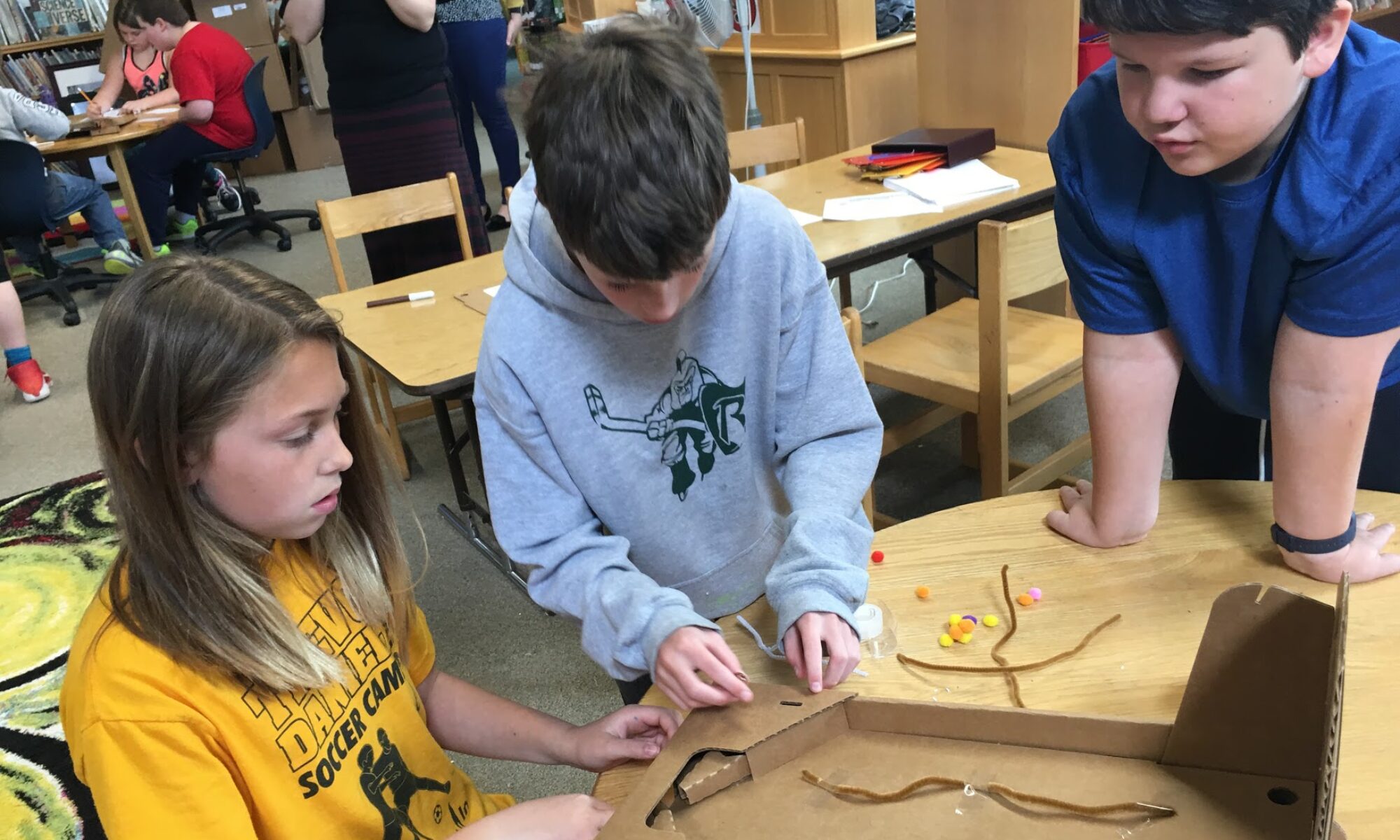



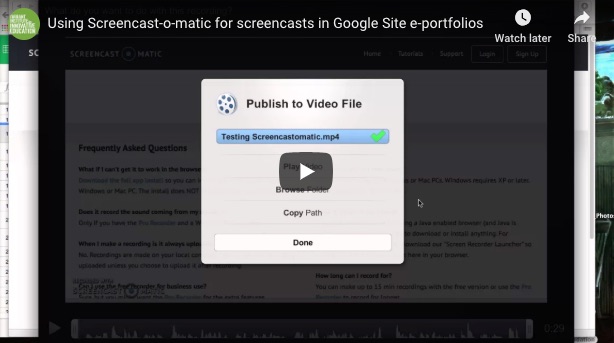
 Many students love working with video. Students can create videos for any subject to show specifically what they’re learning, how they spend their time and to demonstrate proficiency. But it’s not always obvious how you, as an educator, can help students see the connection to specific content areas.
Many students love working with video. Students can create videos for any subject to show specifically what they’re learning, how they spend their time and to demonstrate proficiency. But it’s not always obvious how you, as an educator, can help students see the connection to specific content areas.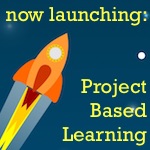
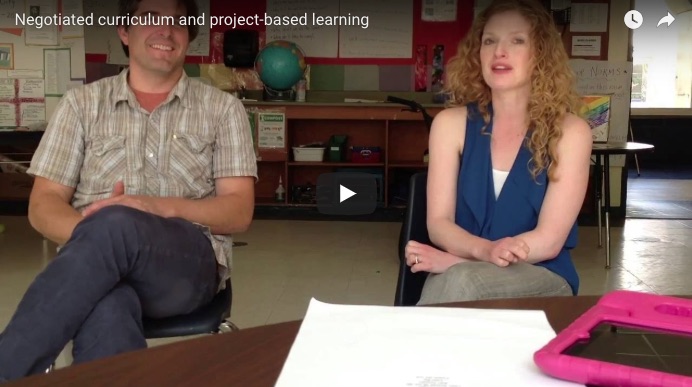
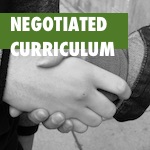 Part of the power of implementing a negotiated curriculum is that it doesn’t just center student voice, it actually moves the learning space towards a democratic classroom, a place where students can advocate for themselves and their learning interests, goals and styles. It’s an important piece of the personalized learning plan (PLP) picture.
Part of the power of implementing a negotiated curriculum is that it doesn’t just center student voice, it actually moves the learning space towards a democratic classroom, a place where students can advocate for themselves and their learning interests, goals and styles. It’s an important piece of the personalized learning plan (PLP) picture.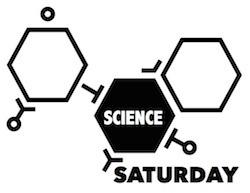
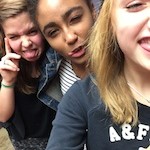 We were lucky enough to get to sit down with three groups of students at
We were lucky enough to get to sit down with three groups of students at 